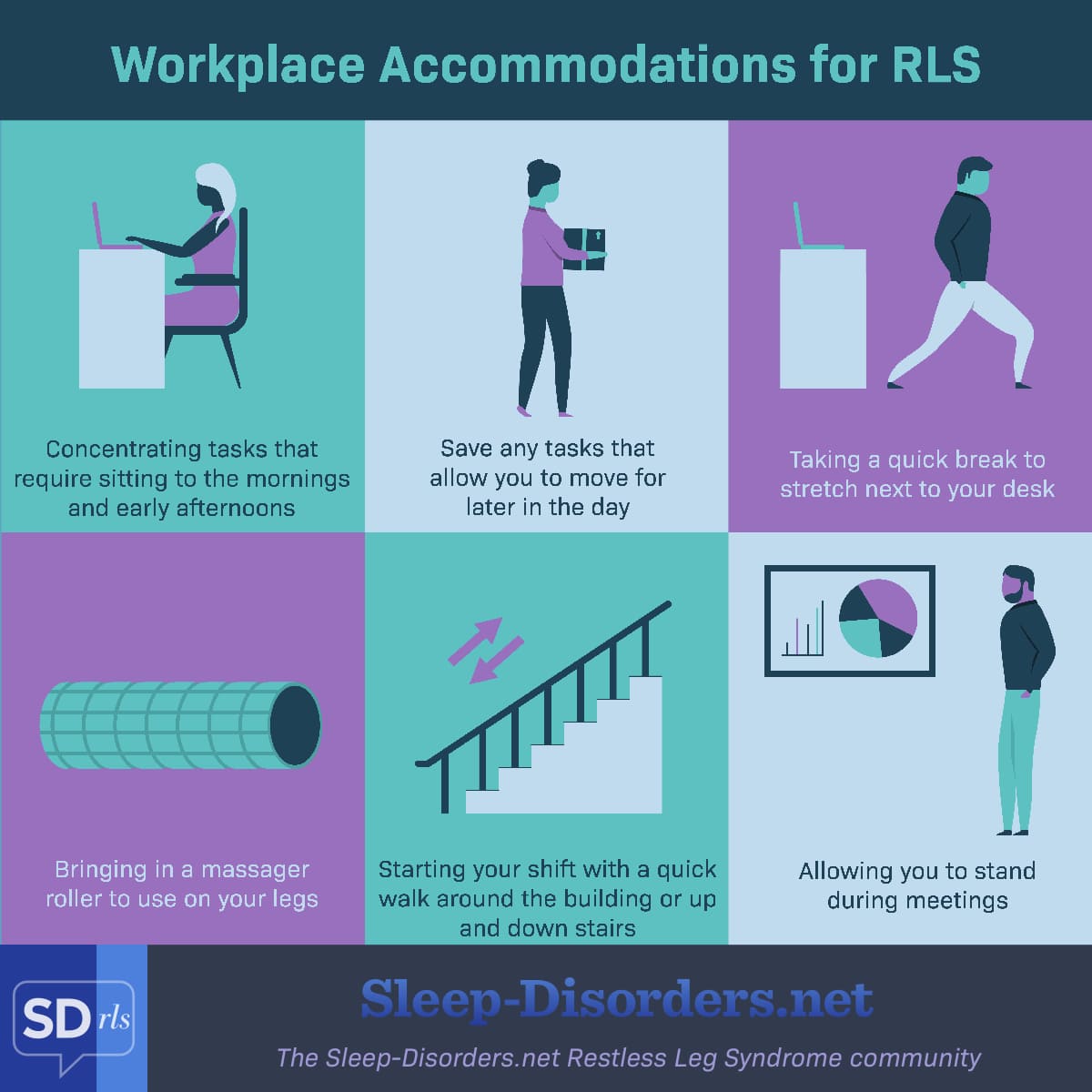Working With Restless Legs Syndrome
Reviewed by: HU Medical Review Board | Last reviewed: June 2020 | Last updated: January 2021
Trying to concentrate on work while your leg muscles are twitching or pulling can be hard. The good news is that many simple techniques can help you manage your restless legs syndrome (RLS) symptoms while at work.
Talk with your supervisor
First, educate yourself about restless legs syndrome so you can talk with your supervisor about the condition. Once you explain why you have the urge to move, especially in the afternoon, you will be able to work as a team to come up with solutions to keep you comfortable and productive at work. You may also need to explain that you do not really have control of your condition and trying to suppress the urge to move can make things worse.1
Common workplace accommodations for RLS
Most workplace accommodations for RLS do not have to cost any money. Examples include:1,2
- Concentrating tasks that require sitting to the mornings and early afternoons
- Moving tasks that let you move to later in the day
- Taking a quick break to stretch next to your desk
- Bringing in a massager roller to use on your legs
- Starting your shift with a quick walk around the building or up and down stairs
- Allowing you to stand during meetings
Figure 1. Workplace accommodations for RLS
Some people find that desks that allow both standing and sitting help. Others keep a mini treadmill under their desks. You can also change your chair height frequently to keep your legs from getting used to only one position. Others find relief when they stand at their desk during phone calls.1,2
If caffeine or sugar trigger your RLS symptoms, explain to your coworkers and supervisor why you need decaf coffee or avoid the slice of the monthly birthday cake. By being open about your RLS, your teammates can react with understanding rather than judgement.1,2
Work the night shift
It may not be an option for everyone, but some people with RLS seek out night shift work, or a labor-intensive job. They find that a job that keeps them on their feet or keeps them awake at night gives them relief.2
Travel for work
Travel can be hard for people with RLS. The stress and long periods of sitting can make symptoms worse. However, there are ways to cope, such as:
- Rather than sitting while waiting for a flight or train, walk the concourse or pace in a small area
- Pack things you use for relief, such as distracting video games, knitting, or crossword puzzles. Remember your RLS medicines and hot or cold packs.
- Try to travel early in the day so that you are on the ground by the time evening symptoms crop up.
- If available, try to get special seating that allows for more leg room.
- If driving, build in time to stop for breaks so you can get out and walk.
- Ask your doctor about a drug that can be used for RLS during the day.
Do not forget to exercise while on the road. A few minutes of gentle stretches or marching in place in your hotel room can help manage your RLS symptoms.
